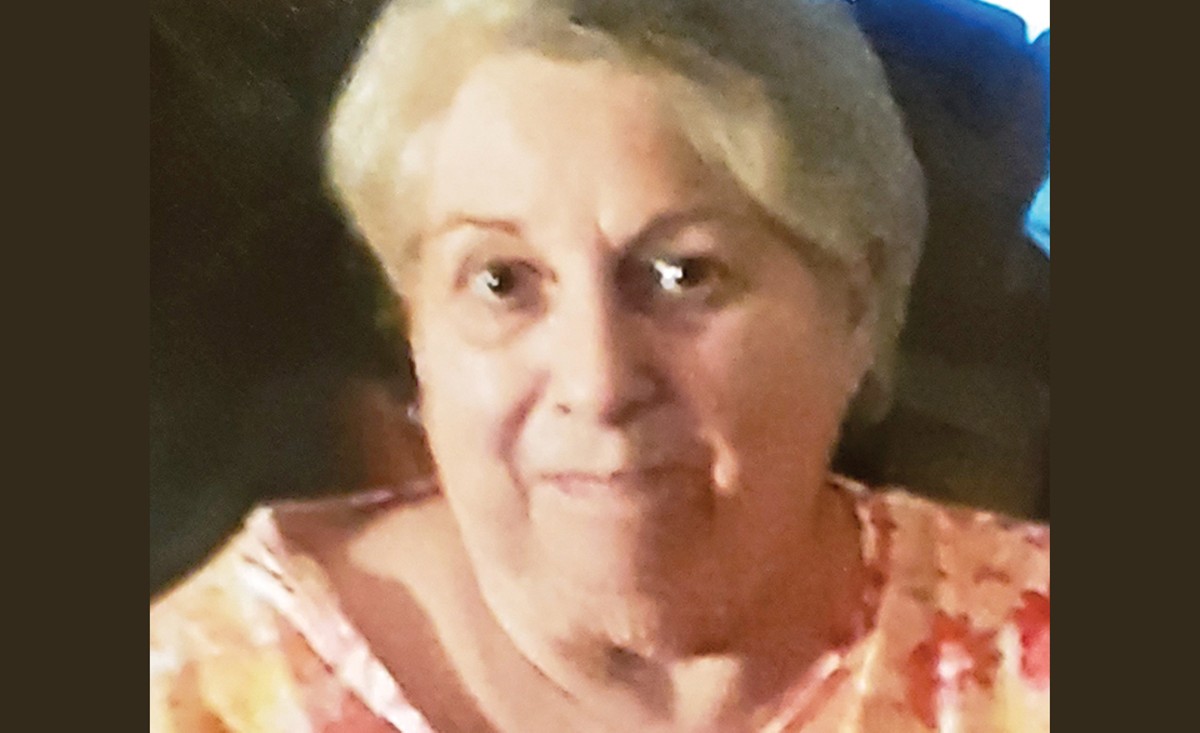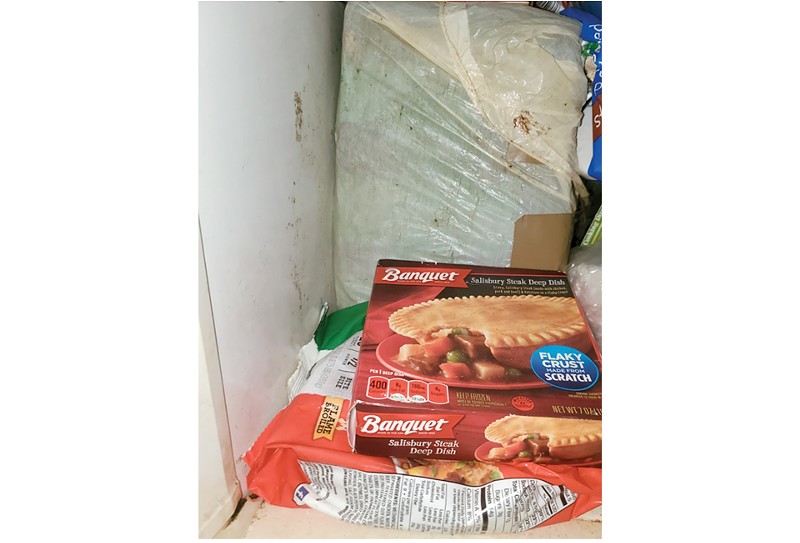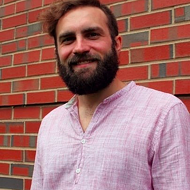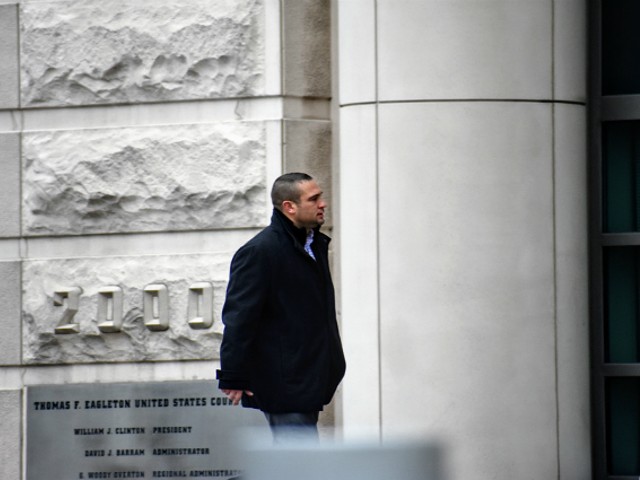Barbara Smith kept a lot of secrets. Even when she was alive, it was often up to her children to suss out key aspects of their identity on their own. An example: For a long time, Adam and Susan had assumed they got their last name from the same man, Adam's father Terry Smith. However, as adults, they found out that Barbara had previously been married to a man named Howard Smith, from whom Susan got her last name (though Susan's biological father was really a man named Don). In the wake of her death, the family compared notes about Barbara. How many times had she been married? How many times did she give birth? Different relatives came up with different numbers. In the weeks since Barbara's death, siblings who previously had been unknown to each other have met for the first time.
Steven Yaw, the man who lived with Barbara for almost twenty years, said her past didn't seem particularly mysterious to him at the time. "Now? Yeah," he adds. Yaw of course knew about the box in his freezer for all those years but says he was "blown away" when he learned on Facebook about Adam's discovery. "For twenty years, I saw that box in the freezer and it was never used, didn't move. I always wondered what that box was for, didn't ask," he says.
In multiple conversations, Adam stressed he isn't judgmental of his mom for being with so many partners. That's not what bothers him. What keeps him up at night is the fact that she left him in the dark about so much — and that she died leaving an infant frozen in a box she knew her son would open.
"She knew she wasn't going to be around much longer. Why couldn't she tell us?" he says. "I can't help but think she did something bad."
In the weeks since finding the baby girl, Adam has combed through his memories for clues to her identity. He remembers once when riding in the car with his mother he asked her why she seemed sad. She responded, "My firstborn Jennifer would have been 21 today." Adam can't recall exactly how old he was when she told him that. Maybe six. Maybe seven or eight.
"I can't help but think that the baby that I found was Jennifer," Adam says.
But even that, the most basic of information, is still beyond his grasp nearly two months later. Police and the medical examiner have yet to say how the baby died. And without a DNA test, Adam does not even know for certain the little girl was Barbara's child, although he strongly suspects that to be the case.
Adam and Susan have always known the box to be in their mother's freezer, in houses from Miami Street to the Hill to Bancroft to Magnolia, meaning it's probable that the baby inside was born before Susan, who was born in 1974. In that case, Barbara would have been barely in her twenties, maybe even younger, when the infant arrived.
It is hard to say what Barbara's life was like at that time. In the early 1970s, she would still have been living with her family in the north St. Louis County city of Florissant, where she grew up. Younger relatives described the family as strictly Catholic, but family members who were around Barbara then and might remember what was happening at the time have not wanted to speak to reporters.
However, Adam says in talking with his relatives, he has come to believe his mother almost certainly concealed her first pregnancy. It is likely her family did not know – or somehow did not notice, even as her belly swelled.
Though concealed pregnancies that end in tragedy are shocking, they are relatively common and follow distinct patterns, says Michelle Oberman. A law professor at Santa Clara University, Oberman has researched the grimmest of outcomes. She is often cited as a leading expert on infanticide as well as neonaticide, killing a baby in the first 24 hours of life.
Women who conceal pregnancies for the entire duration often are disconnected from their own bodies and typically are young, often teenagers, pregnant for the first time. Oberman notes they are slow to recognize the signs of pregnancy, possibly as a result of some sort of trauma, but often because they are scared at the prospect of being pregnant.
And while they are physically and emotionally changing, another hallmark of the cases Oberman has reviewed is that no one around the expectant mothers notices what is happening. The young women end up confused and torn between yearning for a connection with their baby and the feeling that they would be left in a seemingly impossible situation of caring for a child alone.
Because they are young, they fall in the adolescent trap of avoiding the short-term pain of telling an adult they're pregnant, and perhaps getting in trouble for having sex, and ignore the far more serious long-term consequences.
"All too suddenly, labor begins one day," Oberman says. "No one would plan to have a baby alone, unattended, on a toilet. Yet the overwhelming majority of these cases end in this tragic manner."
In cases of neonaticide, the unprepared mothers often smother the newborns in a moment of panic. The response is not, I don't want this baby, but instead, Oh my God, someone is going to find out. Often, the women follow the nearly unimaginable act with tenderness, cleaning the infants before taking them back to their bedrooms. Under their bed, in their closets, they keep the lifeless babies with them. Oberman points out that if a woman were committing something like premeditated murder, she would endeavor to get the evidence as far away from her as possible.
"We're distracted by the fact that the baby is dead, I get that heartbreak. It's a tragedy," Oberman says. "But if we're tending toward worrying about these cases and how to prevent them, then we have to notice that what the woman is doing is actually treating the baby like a baby."
Neonaticide cases tend to follow a distinct pattern, Oberman says. Parts of what we know about the broad outlines of Barbara's younger life follow that pattern. She would have been young and almost certainly afraid. Given her family's heavy-handed Catholicism, it is easy to imagine her concealing a pregnancy rather than admitting she'd been having sex — and worse, had become pregnant. In fact, when she was later pregnant with twins following Susan's birth and put them up for adoption, her family was adamantly opposed, Adam says.
But what actually happened to Barbara and that little girl in the freezer is still a mystery. Oberman says there are significant aberrations in the story that set Barbara's situation apart from the cases she has reviewed.
"What's weird about this case is how long Barbara hung onto the baby, and that she talked about it aloud," the professor says. "Those are strange facts."
Maybe the little girl was stillborn or died of sudden infant death syndrome. Maybe there was an accident. But the idea that Barbara could carry a child to term without anyone close to her noticing seems entirely believable to Adam — because it happened at least one other time.
In 1986, Barbara gave birth to a daughter whom she put up for adoption. Adam and his sister were schoolchildren at the time, and yet, he says, no one in the family — not her children, not her siblings, not her parents with whom she was still in contact — realized what had happened. It wasn't until the days after her death that Adam and Susan found out.








